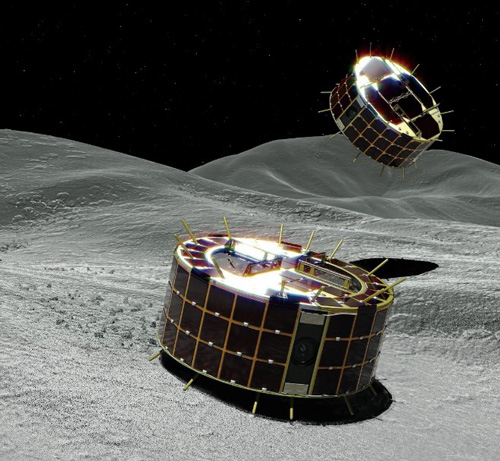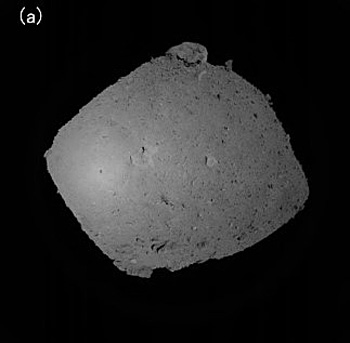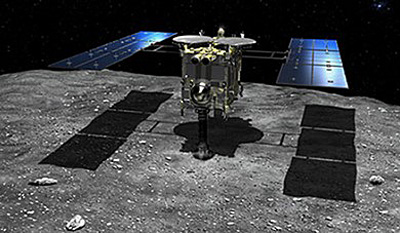News
Successful Landing of Small Rover Released by Hayabusa 2 Updated in November 2018
On September 22, Japan Aerospace Agency, JAXA, announced that their probe Hayabusa 2 had released two small rovers towards the surface of the asteroid Ryugu. Both landed successfully. According to JAXA the two rovers have been able to move around and take photographs. Photographing of the asteroid’s surface has never been accomplished before.
The two rovers named Rover 1A and Rover 1B, were contained inside MINERVA-II-1 and were released from Hayabusa 2 a little after 13:00 on September 21 (Japan Standard Time). The other rover which is still placed inside MINERVA-II-2 will be released in 2019.
As planned, MINERVA II-1 had separated into two rovers: Rover 1A and Rover 1B (diameter 18cm; height 7cm). It is a hexadecagon (16-gon) that looks like a round column from a distance. It weighs 1.1 kilograms. Equipped cameras and sensors took photos and measured the temperature. Each rover communicates with Hayabysa 2 with a repeater and Hayabusa 2 transmits obtained data back to earth. Rover 1A had taken photos of Ryugu’s surface immediately after separating from MINERVA-II-1. The photographic image was safely received at JAXA’s control center.
The gravity on Ryugu is quite small, so it is not possible to use wheels that requiring friction. Therefore, the rover has a hopping mechanism to move around. There is a small motor inside the rover. When this motor rotates the body of the rover jumps. Once it jumps, it stays in the air for about 15 minutes and can move horizontally for a maximum of 15 meters. The rover would move in such a manner by itself, without control or command from earth.
In November 2005, the first generation Hayabusa traveled to the small asteroid Itokawa to release the small robot MINERVA, but failed to land. After 13 years, the team was able to overcome the failure.
3.5 years later, Hayabusa 2 had managed to reach the skies over Ryugu on June 27, this year, 300 million kilometers away from earth. After a gravitational swing-by, Hayabusa 2 had come to the end of its long 320-million-kilometer journey. Hayabusa 2 will carry rock samples collected by MINERVA-II-1 and MINERVA-II-2 and start on its return trip back to earth by the end of 2019. By the end of 2020, Hayabusa 2 will drop the sample-containing capsule onto the Australian desert.
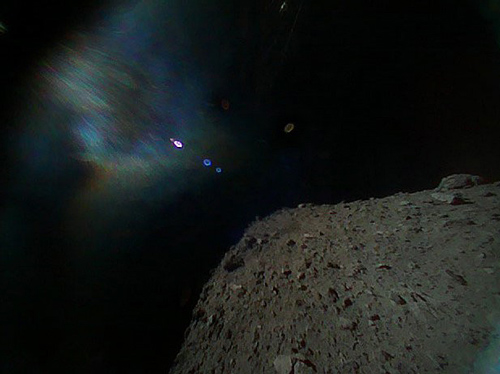
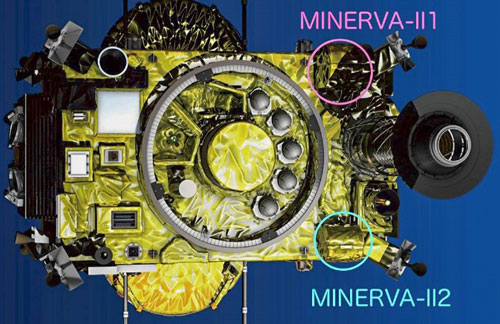
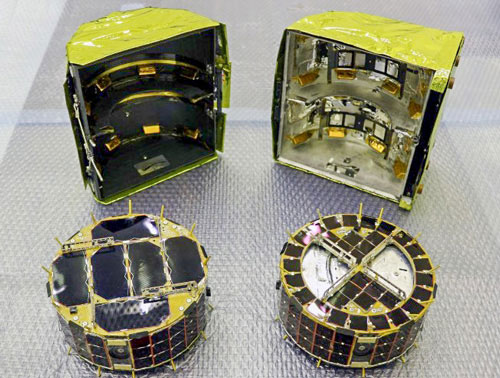
Rover 1A (left) and Rover 1B (right) before getting loaded onto Hayabusa 2. (Provided by JAXA)
